Huawei's Mate X6 is the first variable aperture foldable smartphone – I got to try it out
Google and Samsung's foldable cameras seem to be left in the dust by the tech inside the Huawei Mate X6
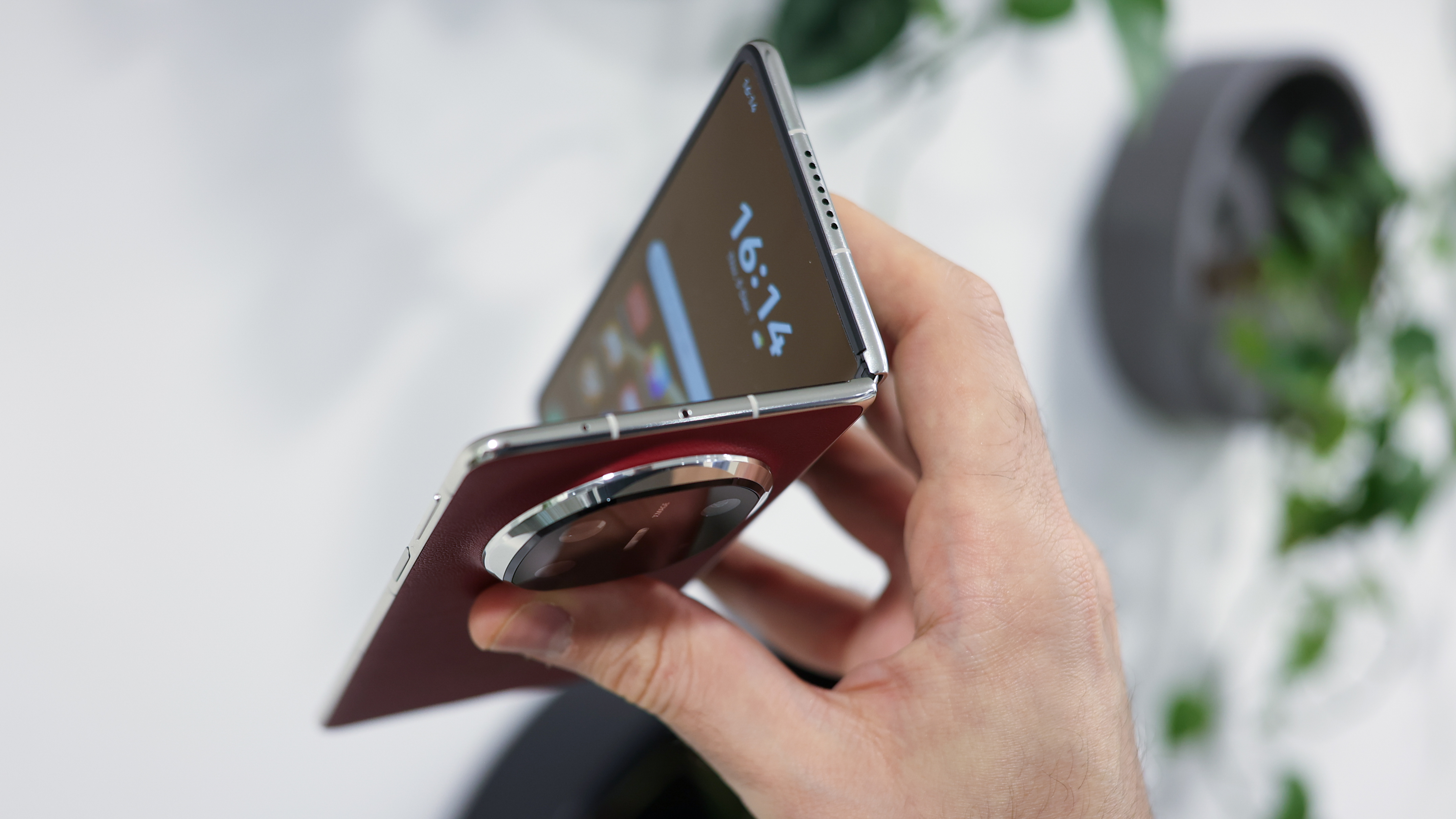
It's no secret that the most impressive smartphone cameras have been coming out of China lately – the Xiaomi 14 Ultra, OPPO Find X8 Pro, and Vivo X200 Pro to name a few – and the latest example is the Huawei Mate X6, the first foldable phone with a variable aperture.
Taking the primary camera all the way from f/1.6-4.0, the Mate X6's mighty main camera sits alongside an autofocusing ultra-wide and a periscope telephoto, impressive stuff for such a slim foldable.
Hot off the heels of the impressive Honor Magic V3 and Vivo X Fold 3 Pro – two other top-tier sharp-shooting foldable – the Huawei Mate X6 checks our camera boxes, but it doesn't just impress us with its imaging. Huawei's flexible flagship is thin, light, and looks more futuristic than the Google Pixel 9 Pro Fold and Samsung Galaxy Z Fold 6.
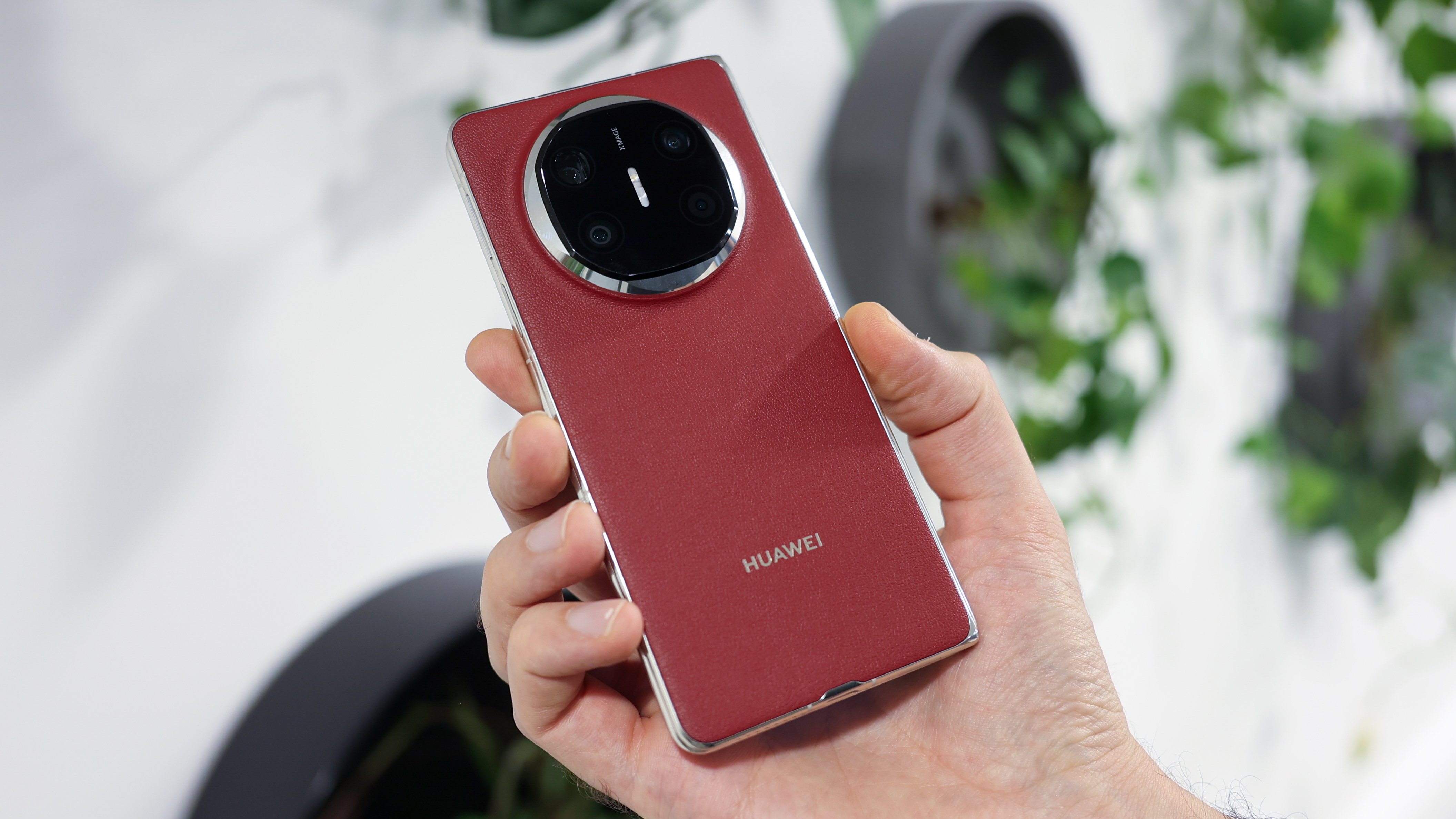
While Huawei phones aren't the obvious choices they once were, given the fact Google apps, including but not limited to Gmail, Maps, and YouTube, don't run natively, they remain unwaveringly popular in China and very visible in other regions less reliant on Google Services like the UAE and Africa.
A variable aperture on a smartphone?
The Huawei Mate X6 isn't the first smartphone to feature a variable aperture. The tech was introduced on the Samsung Galaxy S9 with little benefit owing to the phone's small sensors and how little the aperture actually changed, going from f/1.5 to f/2.4.
The Honor Magic 6 Pro and Magic 7 Pro go one step further and up the sensor size to 1/1.3 inches, with a variable aperture from f/1.4 to f/2 which is still very limited. However, the Xiaomi 14 Ultra, which features a large 1-inch sensor and an f/1.6 to f/4.0 aperture, is the first widely available phone to push the tech into very meaningful territory.
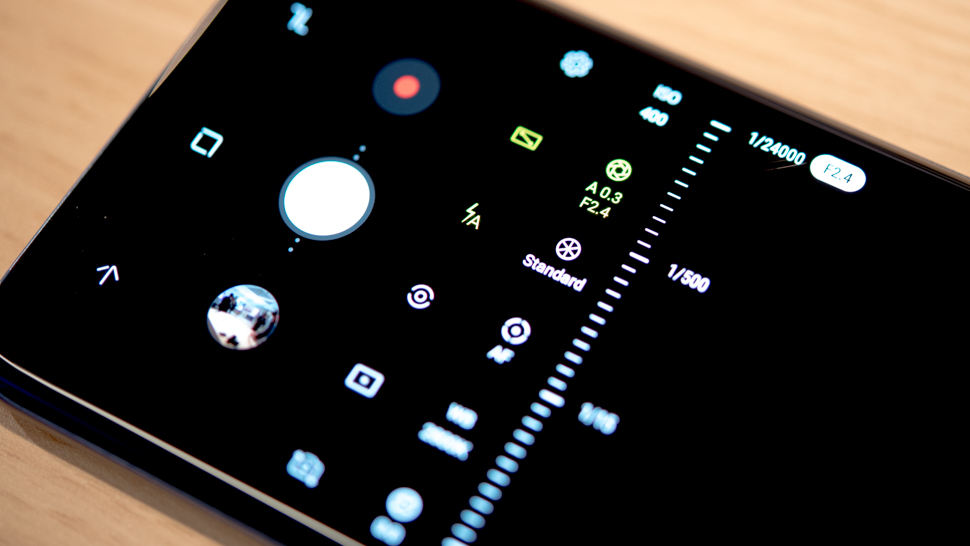
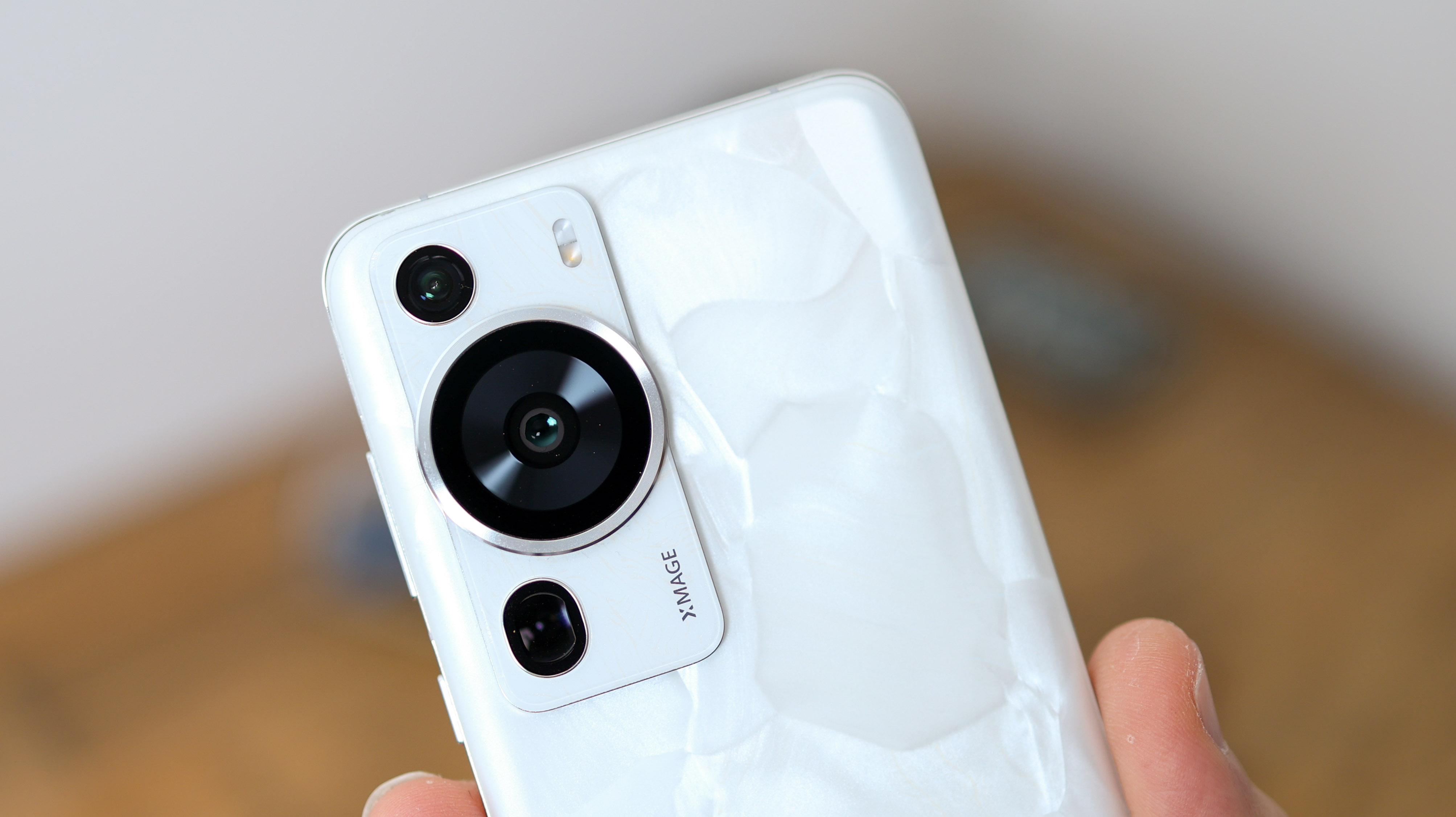
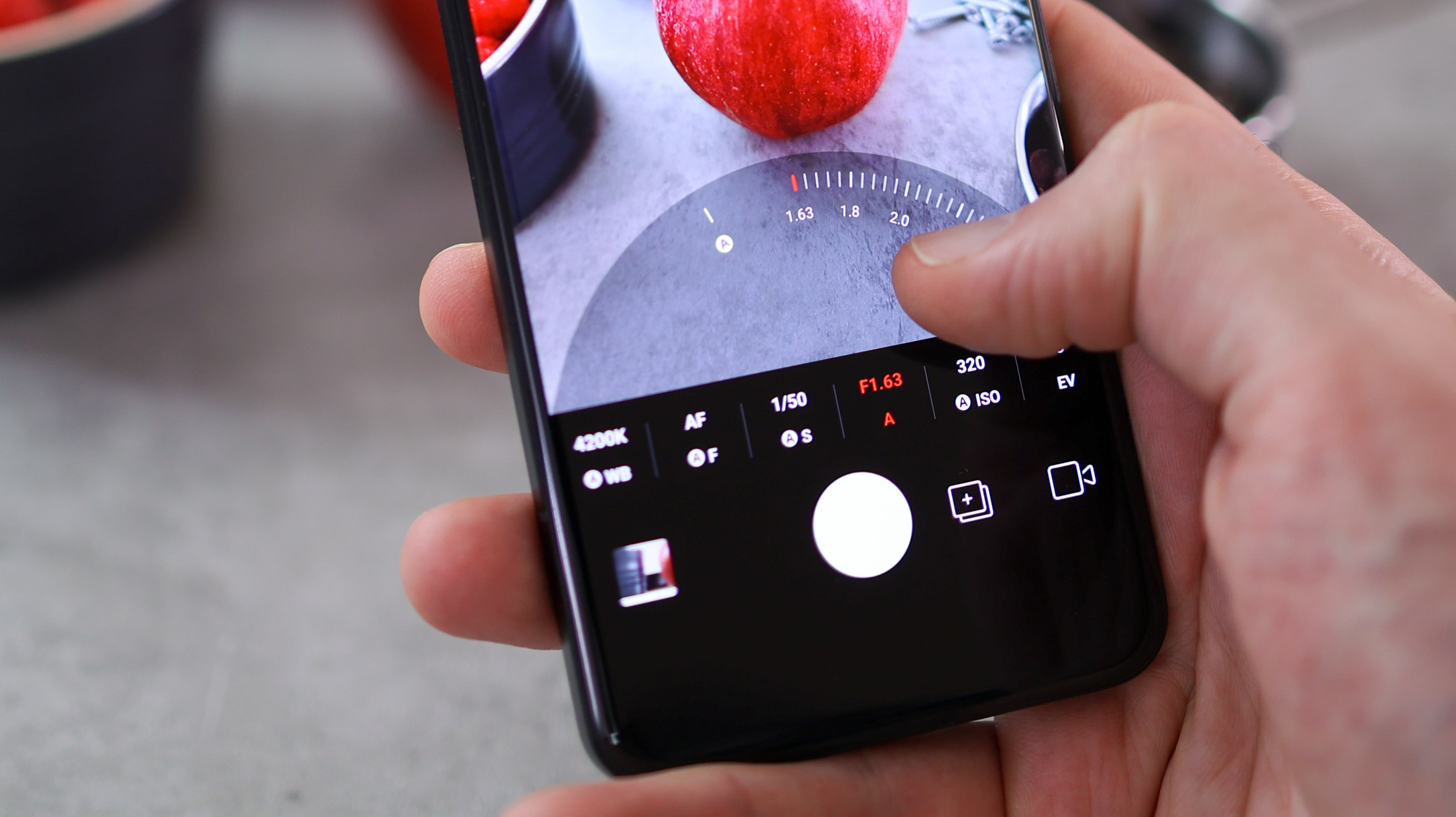
Long before Xiaomi was getting in on the variable aperture action, though, Huawei was leading the charge with its 2022 flagship, the Mate 50 Pro, and its subsequent P60 Pro and Pura 70 Ultra all combine this aperture range with different-sized camera sensors. The Mate X6 is not only the latest Huawei phone with a variable aperture but also the first foldable to support the camera tech.
Get the Digital Camera World Newsletter
The best camera deals, reviews, product advice, and unmissable photography news, direct to your inbox!
Huawei Mate X6 camera
Looking at the camera system beyond its variable aperture, the Mate X6 has a triple camera mix, with a primary 50MP camera, a 40MP ultra-wide camera, and a 48MP telephoto camera with a 4x optical reach and support for telemacro photography.
The telephoto camera's 90mm equivalent focal length is great going for a foldable, and the fact the ultra-wide camera lens supports autofocus makes the camera mix very competitive on paper.
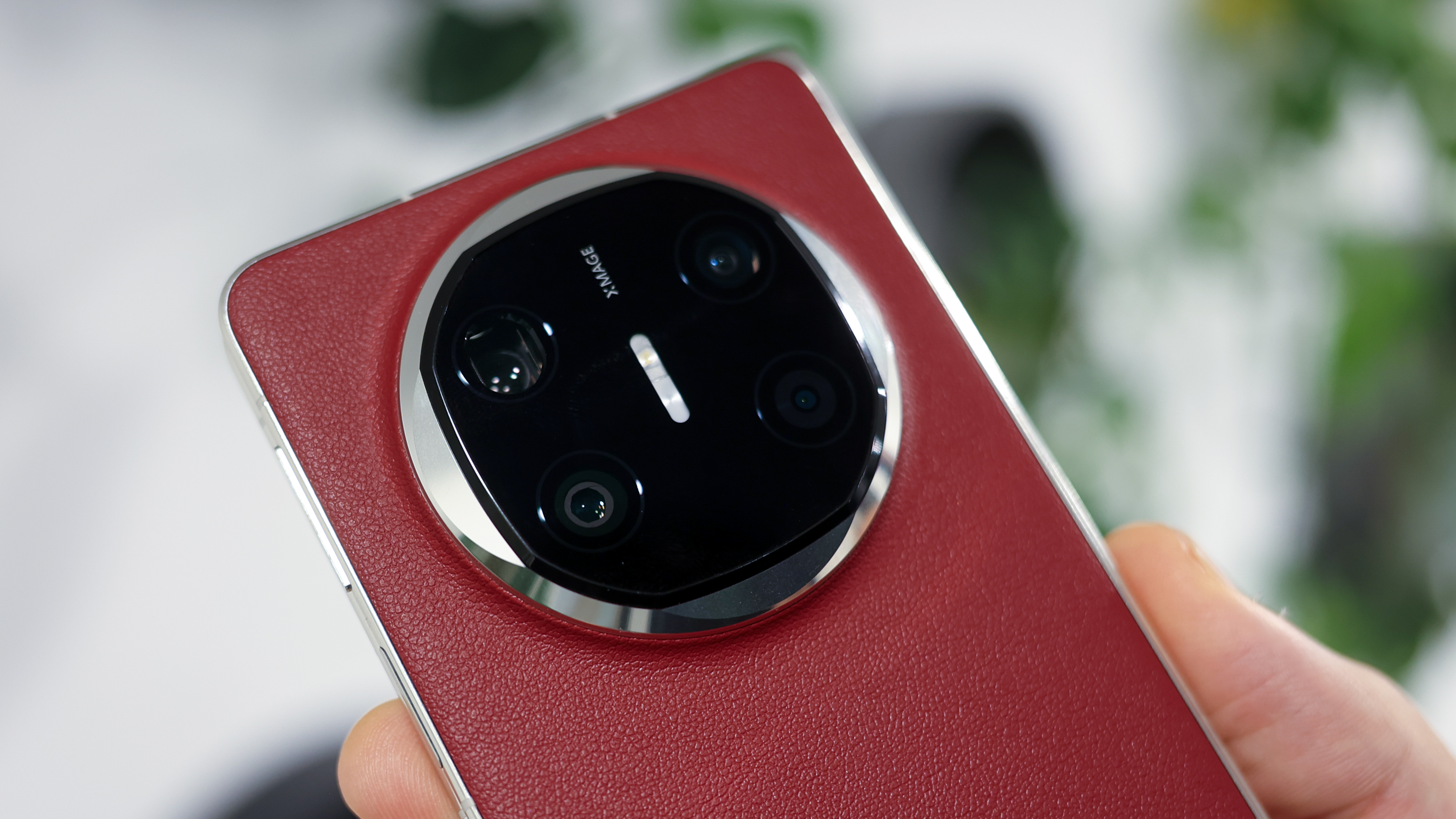
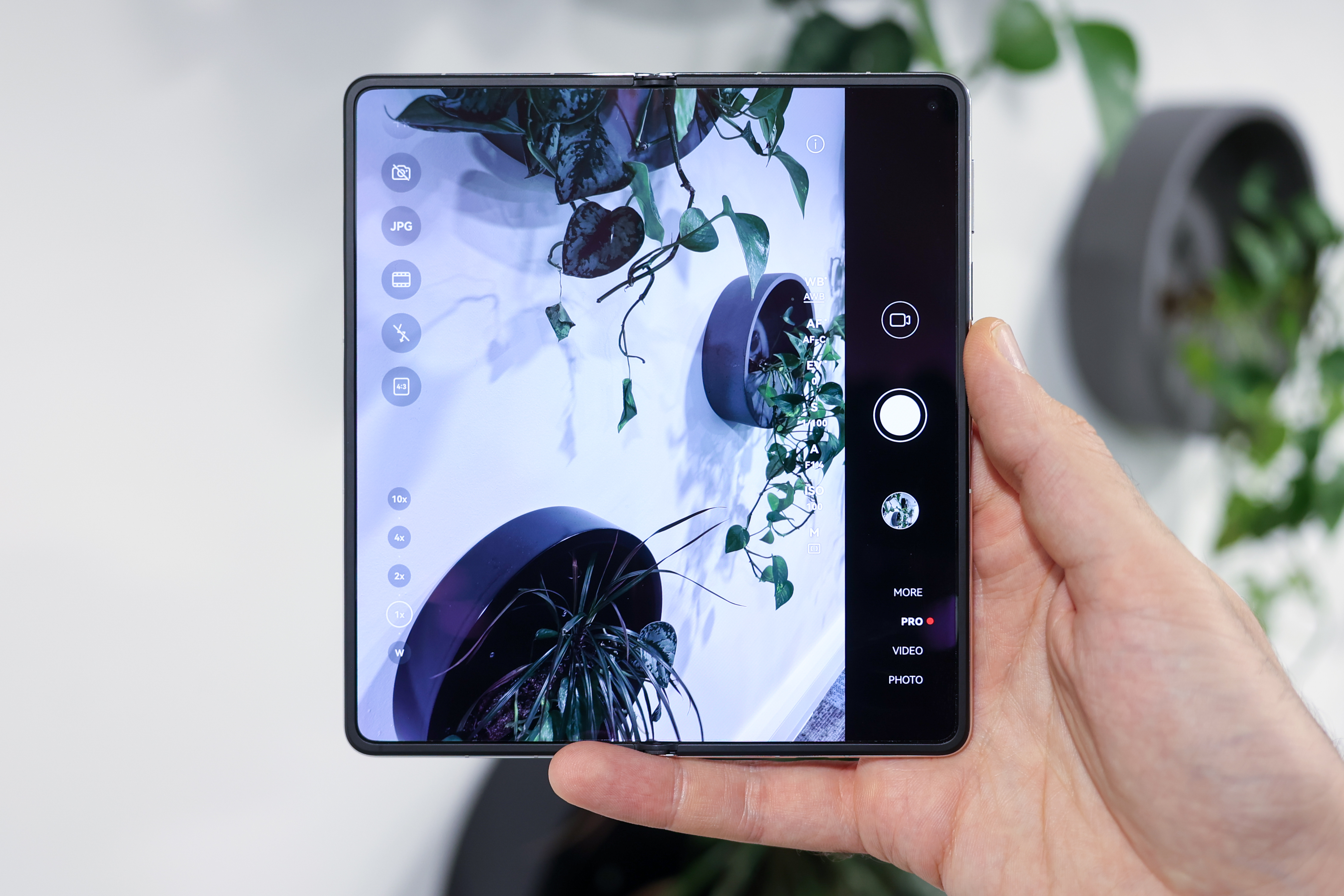
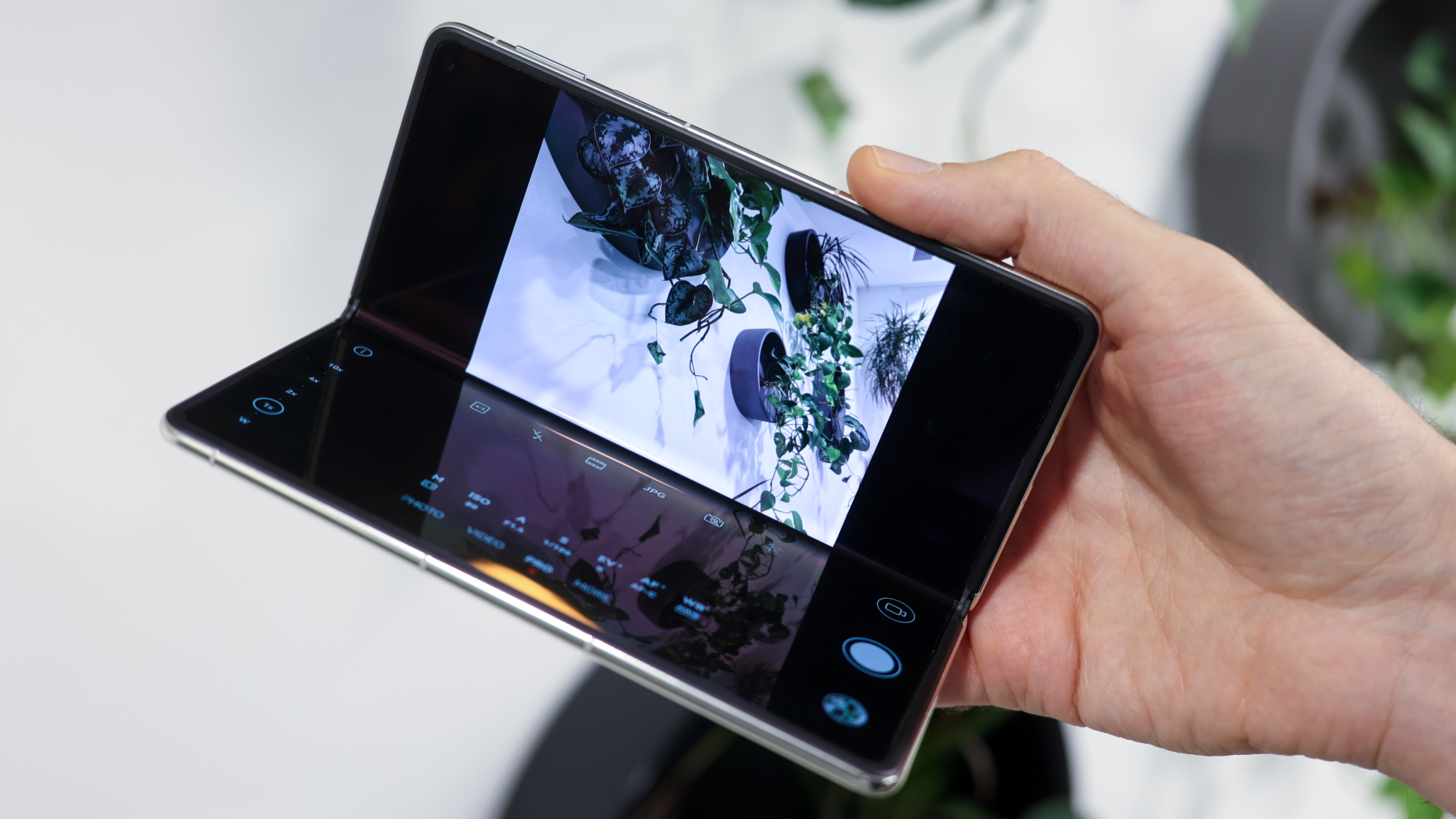
Huawei also includes an Ultra Chroma sensor to measure color temperature more accurately, helping pick up notoriously difficult colors such as gold, as well as nuances in shades of green and red.
One question mark when it comes to the Mate X6's camera specs is the primary camera's sensor size. Some sources suggest it to be an Honor Magic 7 Pro-matching 1/1.3-inch sensor, but Huawei hasn't followed up with a confirmed size when we put the question forward.
So while the Pura 70 Ultra's 1-inch sensor matched with that variable aperture, along with the Xiaomi 14 Ultra, is something of a gold standard for photography, we're guessing the Mate X6's sensor is a fair bit smaller but still competitive for a foldable.
Huawei Mate X6 design and screens
Big-screened foldables have a standard phone-sized screen on the front, and a square-ish tablet display within. They aren't quite as popular in the West quite as flip phones like the Motorola RAZR 50 Ultra and Samsung Galaxy Z Flip 6, likely owing to the fact they're bulkier and pricier. Despite this, you'd be hard-pressed to call the Huawei Mate X6 bulky, with its waif-like design and ultra-sleek aesthetic.
It weighs just 239g, less than an iPhone 14 Pro Max but a bit more than the new titanium 16 Pro Max, and measures just 4.6mm thin when unfolded and 9.85mm when unfolded.
Available in a few finishes, we tried out the red vegan leather option (pictured), which looks striking, though it's also available in a composite fiber material that sports a grey shimmering pattern. Looking like a mash-up between the Huawei Mate X5 and the Honor Magic V3, the Mate X6 in red could be the best-looking foldable we've used to date.
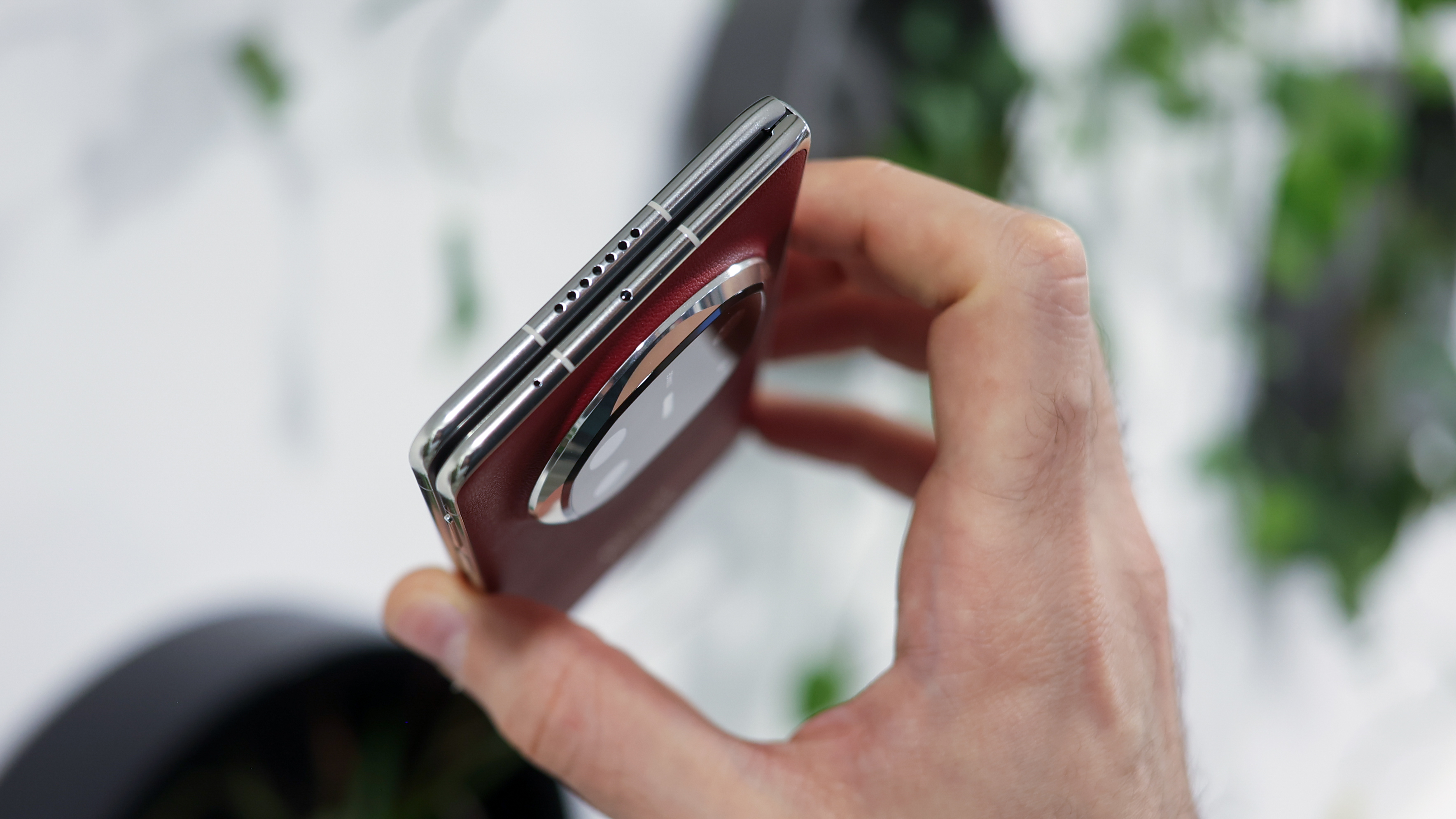
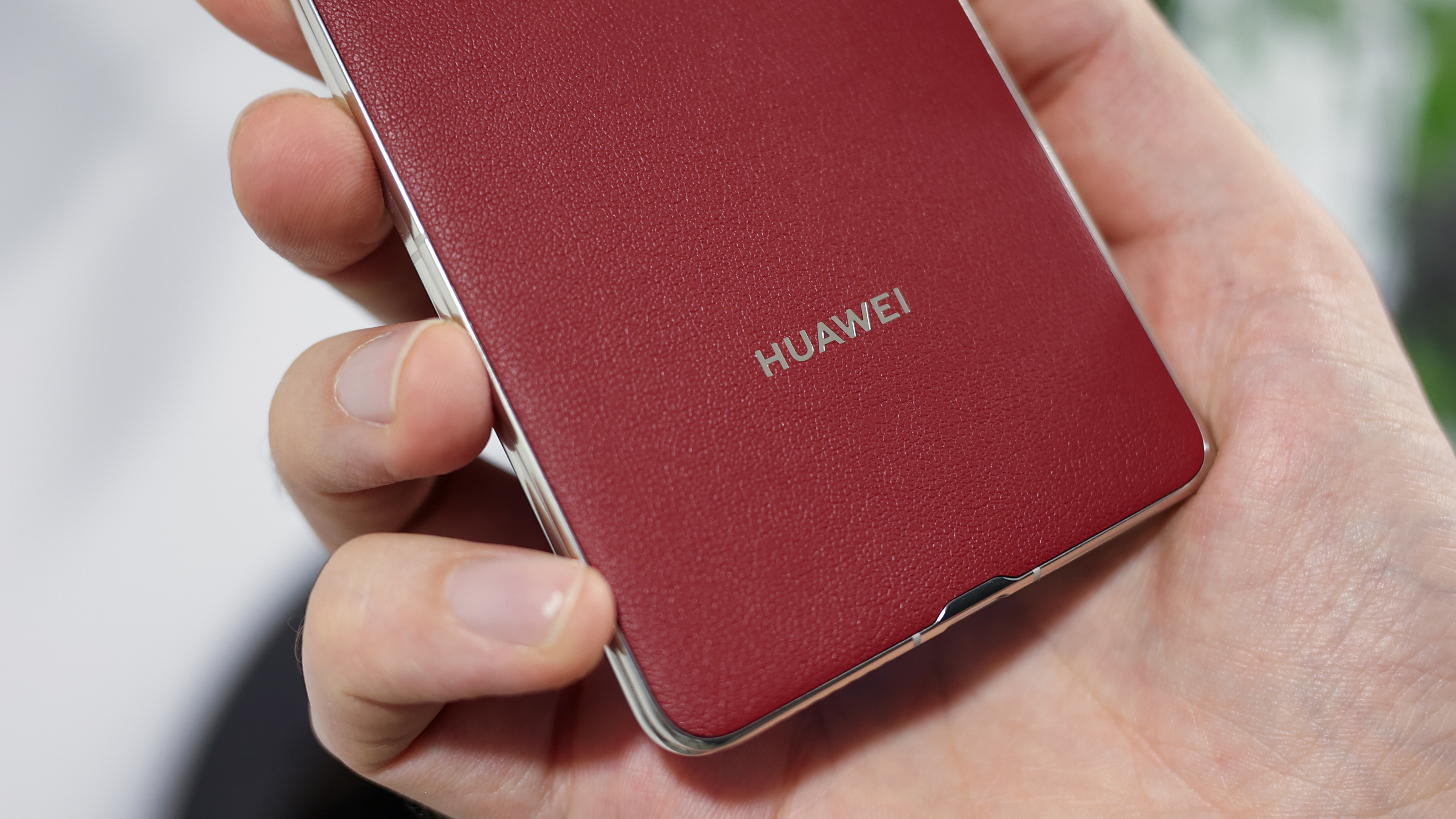
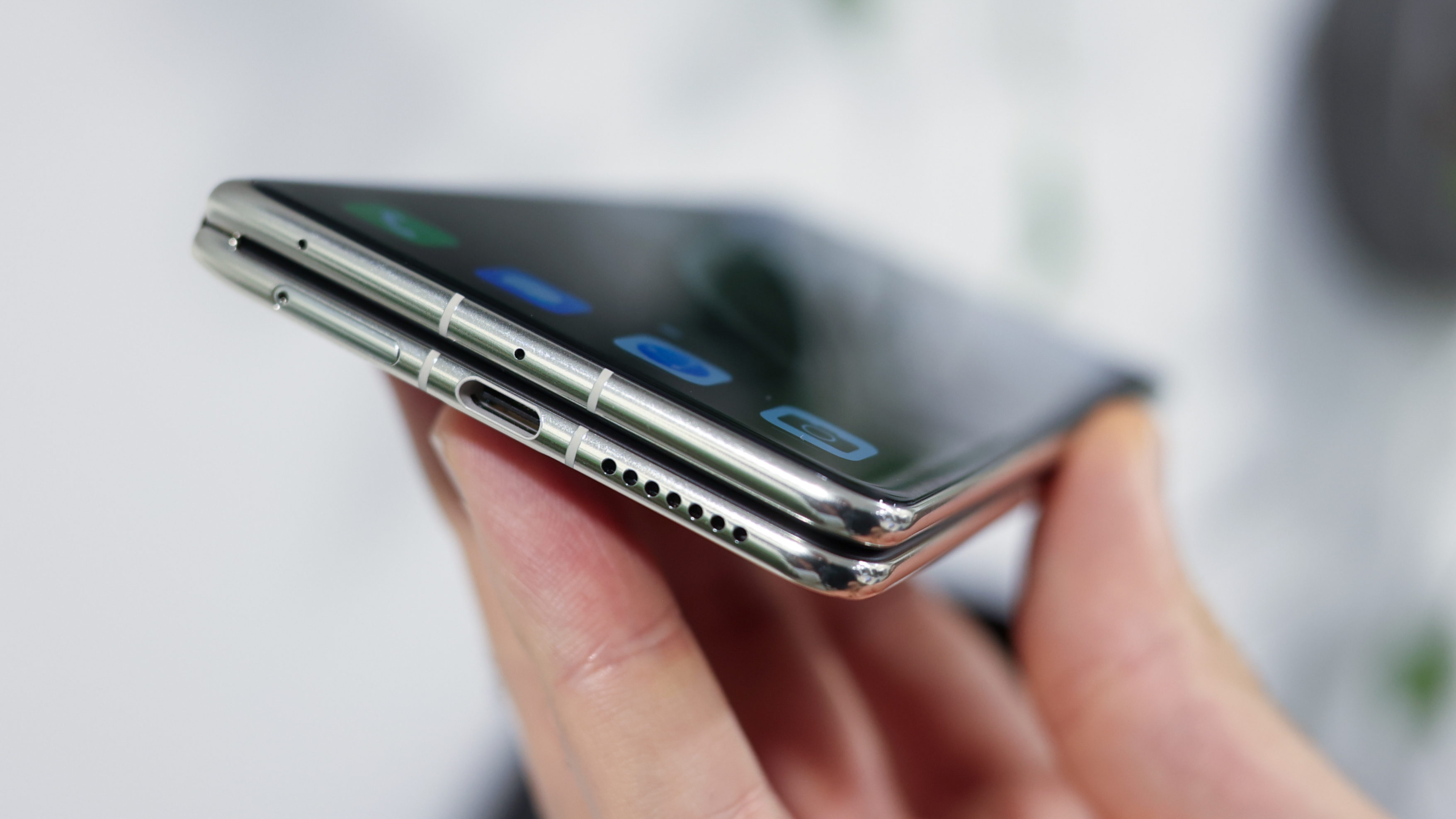
The latest in a line of more durable foldables, the Mate X6 is IPX8 water resistant, and the middle frame is 7-series aluminum alloy, with 2nd generation Kunlun Glass on the front, combining scratch and shatter resistance.
With a 6.45-inch cover screen and a 7.93-inch inner screen, the Huawei Mate X6 has two comfortable-sized displays, with polished metal corners and a quad-curved body making the whole phone feel elegant and rounded whether open or closed.
Both screens are OLED, with the outer screen shining at up to 2500 nits and the inner screen peaking at 1800 nits brightness. They also support HDR Vivid, with 120Hz refresh rates and minimum brightness as low as 1 nit and 1440PWM dimming checking those eye-comfort boxes.
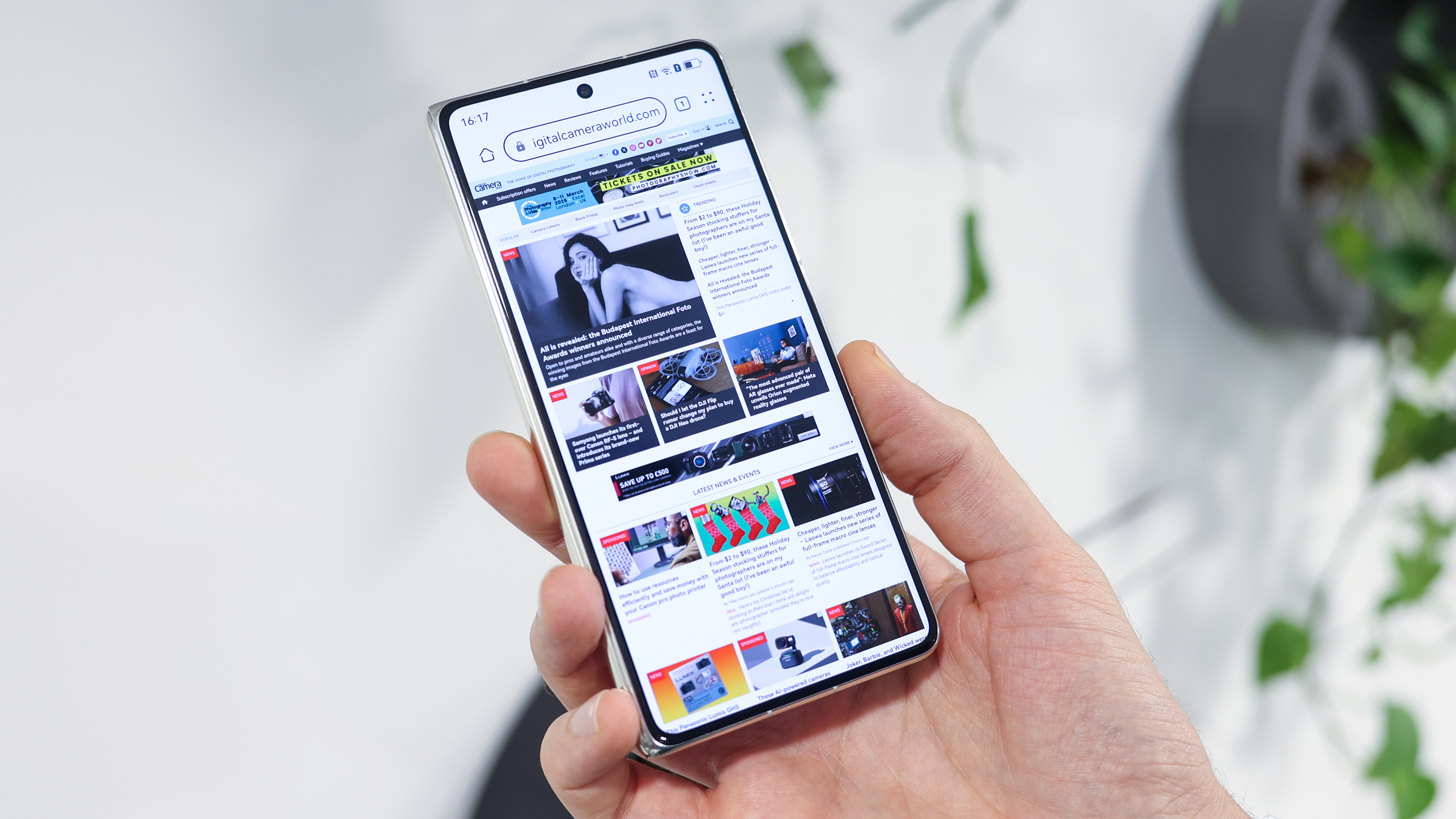
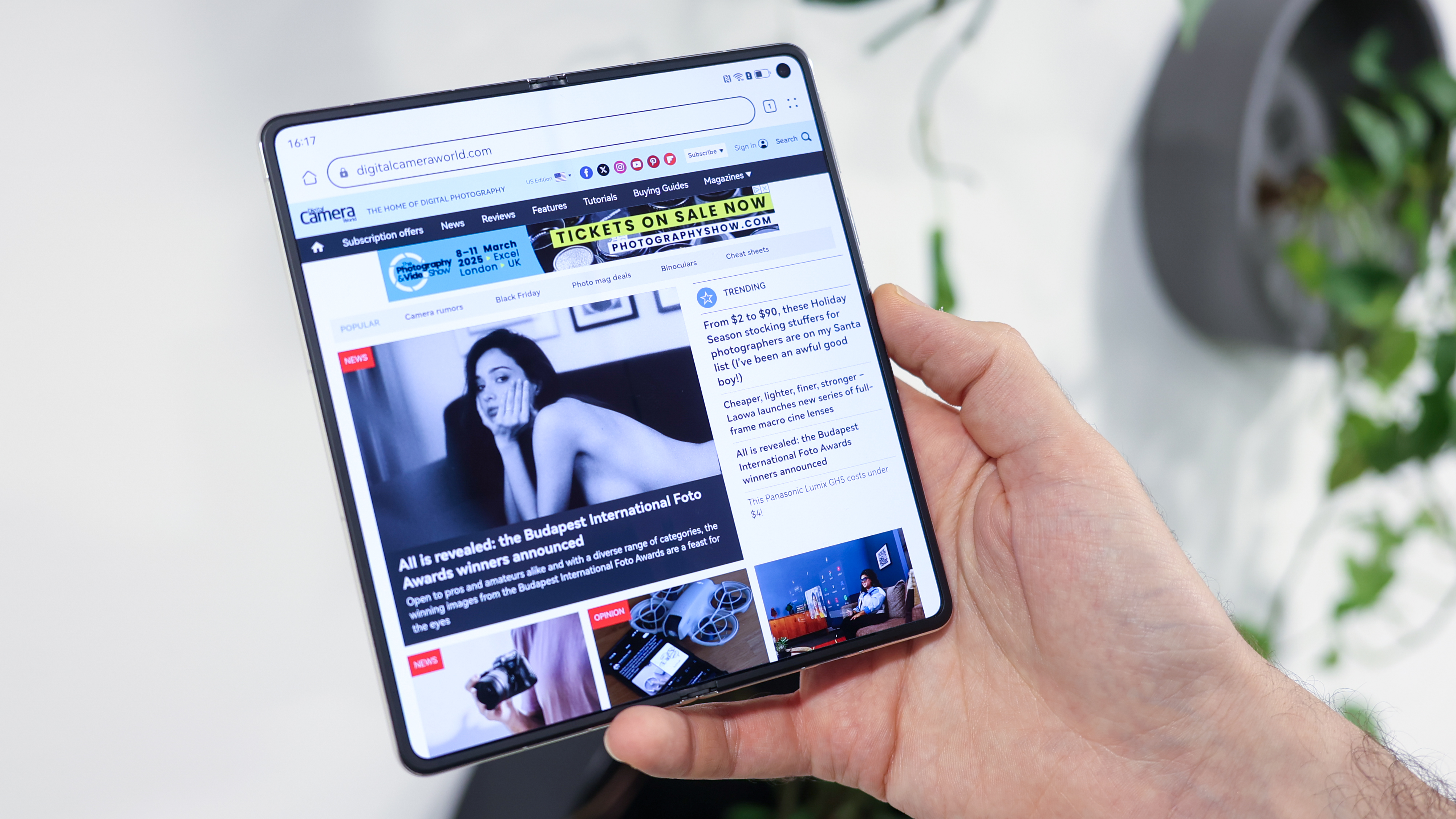
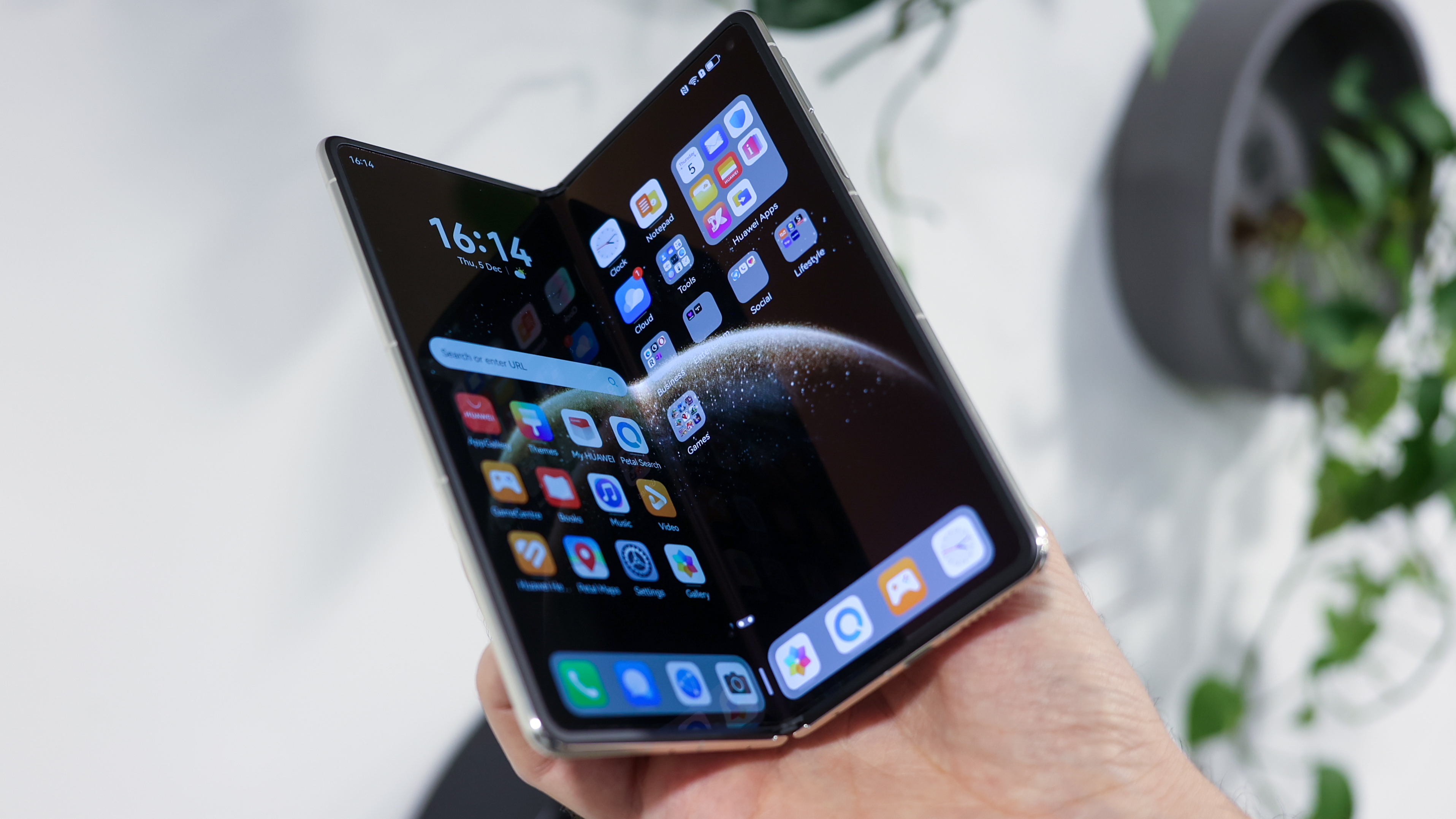
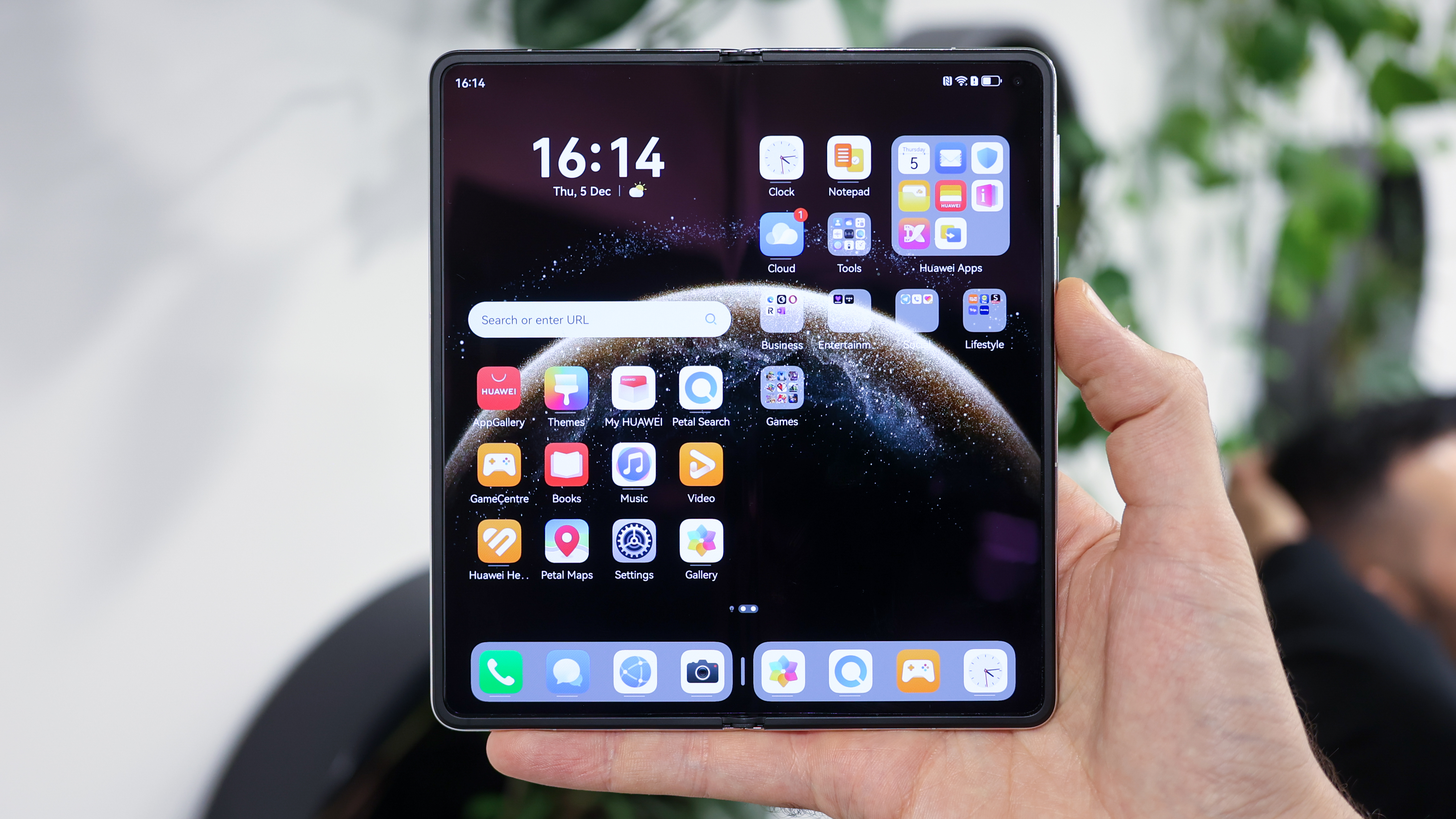
Huawei Mate X6 additional specs
Huawei's keeping a lid on the specifics behind the chipset in the Mate X6 no doubt owing to the geopolitical implications of China-made silicon, so while we can't shed too much light on that, it's fair to say the Mate X6 won't be a gaming powerhouse.
Typically, foldables throttle power and underclock chipsets to reduce heat buildup given how thin they are, so if you're thinking about performance, you're still better off with a non-folding phone.
On the plus, foldable battery sizes are on the up, with the 5,110mAh battery in the Mate X6 amongst the largest of any foldable device, and with 66W wired and 50W wireless charging, it also powers up quickly, especially compared to the Samsung Galaxy Z Fold 6.
Running Harmony OS, Huawei's operating system that runs Android apps, just not in the same way other phones do; many apps will be available via Huawei's AppGallery, though some will be out of bounds, as will services that exclusively require login via your Google ID.
If you can get past that fact, Huawei has introduced some nifty multi-tasking mechanisms to take advantage of the big inner display, with three-app off-screen multi-tasking complete with stereoscopic transitions for added visual flair.
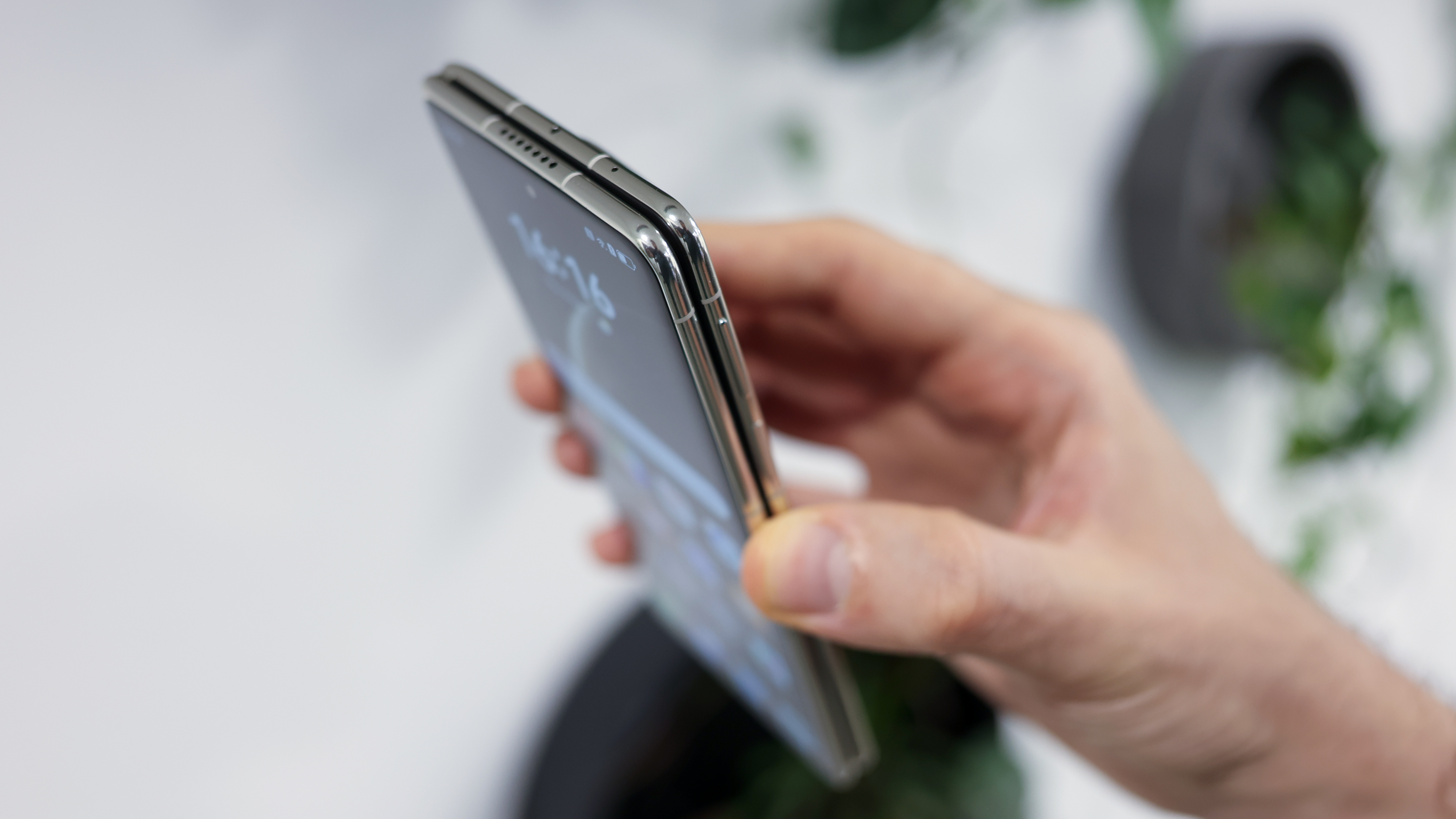
Huawei Mate X6 early impressions
The Huawei Mate X6 is a beautiful-looking foldable with enticing camera specs.
Foldables are niche, big-screened foldables are more niche, and Huawei phones are arguably more niche still, given their software limitations. So, while we've loved getting hands-on time with the Mate X6, and its camera could be the best of any foldable we've tested, we're sure most will be admiring it from afar.
One thing the phone does do, along with the Mate XT, Huawei's tri-fold phone, is reiterate that Huawei's making seriously impressive hardware and that its commitment to imaging, both in terms of hardware and software, is going strong.
Wrapping up with an anecdote, during a recent trip to China, we noticed many Huawei Mate XT and Mate X5s in the wild. Unlike in Europe and the US, seeing foldables in Beijing, Shenzhen, and Shanghai is relatively commonplace, and every foldable we saw was made by Huawei.
So long as Huawei phones continue to be popular on home turf and in territories like the UAE, we anticipate there won't be any let-up in pushing design and camera innovation, and this should continue to drive innovation for other phone makers too, Apple, Google, Samsung, we're looking at you.
If you like the look of the Mate X6, are thinking about a foldable but don't know which one to take the plunge on, check out our guide to the best flip and fold phones of 2024, and if you aren't quite ready for a flexible display, here are our top camera phones of 2025.
Basil Kronfli is a freelance technology journalist, consultant, and content creator. He trained in graphic design and started his career at Canon Europe before moving into journalism. Basil is also experienced in video production, independently running the YouTube channel TechEdit, and during his time at Future, he worked alongside the Digital Camera World team as a senior video producer.

